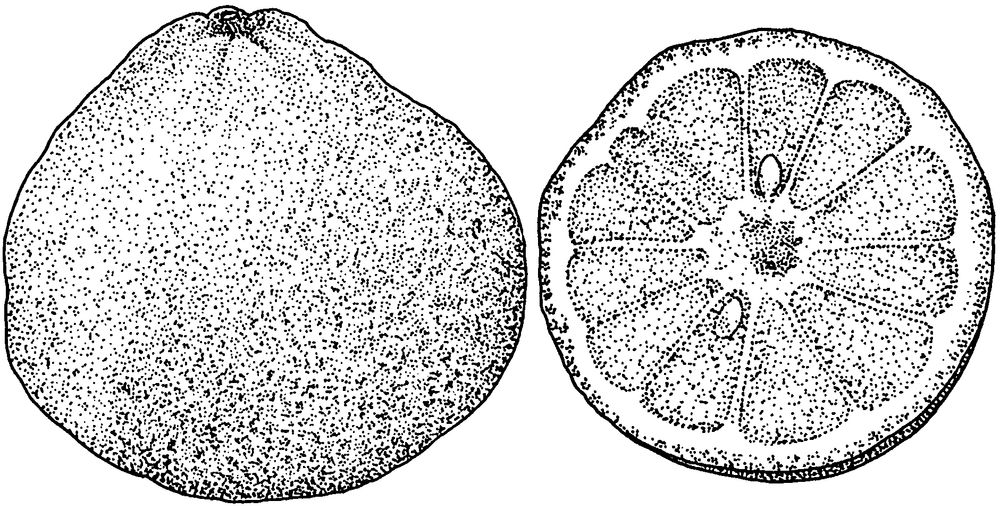Label
All
0
Clear all filters
🍝 Enjoy the cooking of Italy and save 25% on ckbk Membership 🇮🇹
Ugli Fruit
Cross between Citrus reticulata and Citrus paradisi or Citrus grandis
Appears in
Published 1986
Ugli Fruit is a trademarked name, which supposedly originated in response to the initial marketing foray of this Jamaican citrus fruit (which Jamaicans tell me is pronounced OO-gli). Canadians to whom it was first introduced, and who still consume it eagerly, demanded more of that “ugly fruit.” As if that weren’t precious enough, the spelling was registered with an “i” and the advertisements bear a slavering bulldog and the slogan “but the affliction is only skin deep.”

As far as I am concerned, these are the only points against the fruit. The somewhat puffy, thick, slightly loose-fitting skin, which may form a furrowed collar or neck on the rounded or slightly pear-shaped fruit, seems to be the reason for the ugliness campaign. This skin, which ranges from lime-green to light orange (and any combination in between, sometimes mottled), is certainly not unsightly; it is simply not as sleek and regularly painted as more common citrus fruits. The loosely adhering coat is a cinch to peel, and the pulp is relatively free of seeds. Uglis vary from the size of a healthy navel orange to that of a mammoth grapefruit. The pulp is a sunshiny yellow-orange and composed of atypically large, tender juice sacs (vesicles) that give it an unusually soft succulence for a citrus. Once cut, the fruit fairly overflows with juice that is generally of considerable flavor and distinction. Brightly acid-sweet, underscored by a zesty pungency, ugli fruit at its best reveals the influence of its ancestors, probably a mandarin and a grapefruit.
In this section
Part of
Advertisement
Related Recipes
-
-
-
-
Related Reference
-
-
-
-
Advertisement
The licensor does not allow printing of this title



